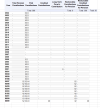Hi There,
My wife has been employed with HSE since early 90s, but 50/50 job sharing for 26 years and if she works until age 60. she will only have 25 years actual service. (She also took a career break for a few years). Her current pension forecast is approx. 9.5k per year, (based on job share final salary) which is less than state pension and she is not entitled to state pension as she only paid Class D1 PRSI.
Is there any entitlement to state pension top-up here ?
I have read that final salary for pension purposes is the 3 highest years from last 10 years service .
If she was allowed to work 3 years at full time , instead of job-share before retirement, would this effectively double her retirement income ?
Is there any other options to increase the chances of state pension ?
Can she buy back Higher class PRSI for her 4 years of career break ?
Any advice appreciated
My wife has been employed with HSE since early 90s, but 50/50 job sharing for 26 years and if she works until age 60. she will only have 25 years actual service. (She also took a career break for a few years). Her current pension forecast is approx. 9.5k per year, (based on job share final salary) which is less than state pension and she is not entitled to state pension as she only paid Class D1 PRSI.
Is there any entitlement to state pension top-up here ?
I have read that final salary for pension purposes is the 3 highest years from last 10 years service .
If she was allowed to work 3 years at full time , instead of job-share before retirement, would this effectively double her retirement income ?
Is there any other options to increase the chances of state pension ?
Can she buy back Higher class PRSI for her 4 years of career break ?
Any advice appreciated
